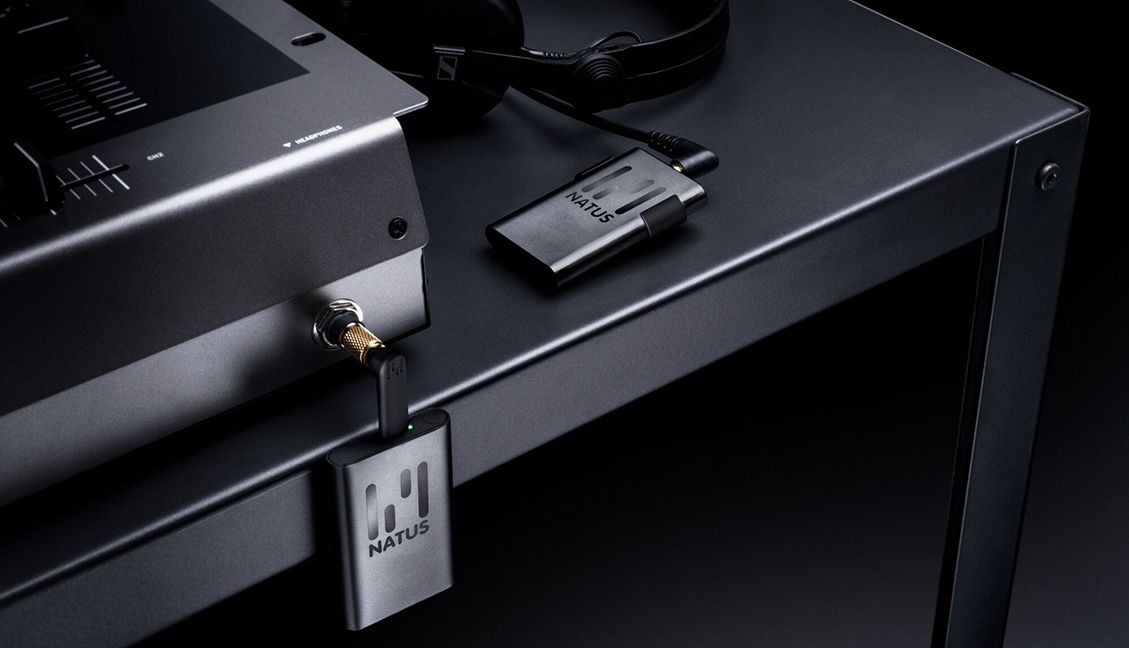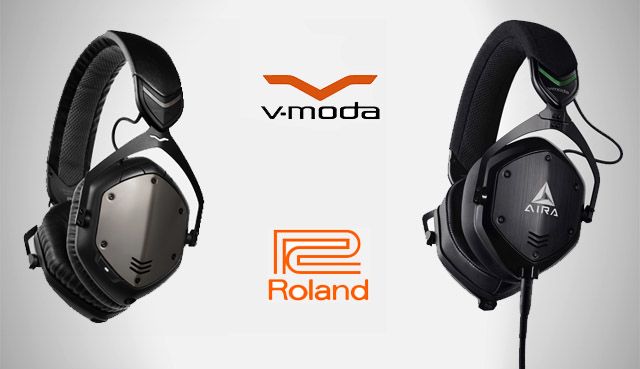When DJing, as we know it today, first shimmered into life in the discos of the late 70s, stick headphones were very much standard issue for all spinners. They’ve lost out in popularity to regular over-ear cans for many years now, but some stalwarts are still gripping tightly on to their sticks today. Why do they do so? And should you be following their lead?
If you are young (say, under 25), and your taste is based solely around a genre like big-room house, or drum & bass, it’s quite possible that you’ve never even seen a stick headphone being used.
DJs of the more ‘vintage’ variety, and those with a love for deep house or disco, will most likely be very familiar with them, of course. But exposure to lollipops, in this day and age, is far from guaranteed.
So, the first question to ask is:
What Is A Stick Headphone?
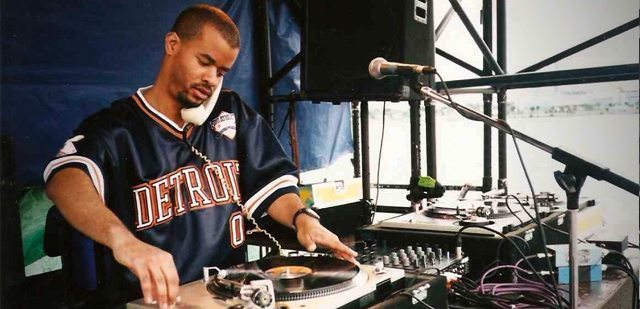
Well, cue sticks (also known as lollipops, for obvious reasons) have their roots in the converted telephone handsets beloved of many DJs in the 1960s and 1970s due to their extreme hardiness, in a time when purpose-built DJ headphones simply didn’t exist. Terence Parker still uses one today, and it’s earned him the moniker of ‘Telephone Man’.
When we talk about lollipops today, we’re talking about either custom builds, or about the few mass-produced models on the market, all of which are largely the same in principle, based on the original Sennheiser 412 design used by Larry Levan and the disco greats:
- A single cup
- wired in mono (so you hear both left and right signals)
- attached to a stick
- The cable is usually attached via an XLR connector (which is great for longevity!)
Sounds simple, of course, but there are infinite variations on that theme. The cup and driver could be pulled from a huge variety of existing headphones – Sony MDRV-700s are popular, partly because of their very ‘forward’ sound, and also because their unfortunate design flaws mean there are always broken pairs around to salvage cups from.
Likewise, the size and shape of the stick itself can vary wildly according to the users taste. Even the Zomo & Numark ‘stock’ models here have completely different shapes. Danny Tenaglia uses a kind of hybrid between a lollipop, and a regular headphone, with a single cup and a stick which goes around to his other shoulder, like a travel pillow. Guys like Acou-Sticks in the UK, and Mario G in the US, will knock up pretty much anything your heart (and neck) desires.
We’ll take a closer look at some of those options later, but before that, the second question:
Why Should You Use A Stick Headphone?
Aside from the nostalgia aspect, and a desire to look like an O.G House jock, there are some definite advantages to using a cue stick. The main one, is that using a lollipop encourages you to not use it. That might sound odd, but all too often, DJs can find themselves locked away in their own little audio zone; headphones on one or both ears all night, with scant regard for the sound which is actually coming out of the PA.
Using a lollipop makes you far more likely to get into a workflow where you’ll pick up the headphone, quickly use it to get the beats matched, then put it down and perform the mix itself using the monitors and the house system. It means you’re more in touch with the dynamics of the track as heard by the crowd; the way the bass rumbles through the room, the way the hats sneak into the mix; it’s hard to describe, but mixing in that way gives you a different feeling. Not definitively better, or worse, but different, even from using regular headphones in a minimal way.
Despite being a creaky old DJ myself, I only started experimenting with lollipops recently, after using regular cans for my whole career. So I asked someone who has been using a lollipop since the days of disco, house music legend David Morales, what his perspective is on why lollipops are still the way to go:
“I’ve been using a lollipop since 1977. I started with the original Sennheiser 412 mono single headphone. It was dubbed “the lollipop”. What I like about using a lollipop is that I can hear what’s going on on the dance floor as well. I could never play with normal headphones. It doesn’t feel natural. I feel like a pilot…
I like to take my ear away from the headphone while I’m mixing so that I can make sure that I’m in the right place.”
Interestingly, David Morales is one of the ‘old-guard’ of NYC house jocks who has fully embraced modern technology, playing off Traktor, using a Maschine as his controller. Yet one thing remains consistent in his setup – that lollipop.
Any long-term reader of this site will know, DJ Techtools has zero problem with people using sync. Backed with the right skills, using sync is an incredibly powerful tool. But if you use it, ask yourself this: Why do you still need to wear regular headphones all night? There quickly comes a point, for many people, as they adapt themselves to a sync workflow, where pre-cueing a track becomes far less important than actually monitoring the output, when you’ve got two tracks and a loop already running, for example.
So why not try a lollipop? Pick it up, cue, put it down. Then mix… It seems like a perfect complement to a controllerist setup, and I think it’s well worth experimenting with.
Why Shouldn’t You Use A Stick Headphone?
Lollipops are categorically not for everyone. Play hip-hop? Mix every 90 seconds? Lifting and then putting down that stick will get very tiresome, very quickly. Or you’ll leave it wedged on your shoulder all night, and completely ruin your neck for a week (I’m speaking from experience there). Lollipops are most suitable when you’ve got time; performing long mixes, letting tracks play out that bit longer.
If you can’t rely on having a decent monitor setup at a gig – a lollipop is not for you (not that night, anyway).
If you have major concerns about hearing damage, and have decided to go the in-ear route, instead of even dealing with monitors (like our esteemed editor), then more power to you. But a lollipop is not for you either.
One final reason you might want to avoid a lollipop is if you’re attached to the look of regular DJ cans. I’ve spoken to a few people who would feel positively naked without their big headphones attached to their head throughout a gig; it’s pretty much the only thing that identifies them to the crowd as ‘the DJ’; their uniform. But in an age where people walk the streets in big Beats, Sony, and V-Moda headphones all day long, is that really something that sets us apart anymore? Something to think about, anyway.
How To Try Them – Mass-Produced
I wouldn’t say there has been a massive resurgence in lollipop manufacturing, as there are still very few pre-built models around, and that’s not really any more than the early 2000s, when, as far as I know, Vestax and Stanton were the only company mass-producing a model at all.
If you want to go the pre-built route, then these are your two main options today:
Numark Redphone
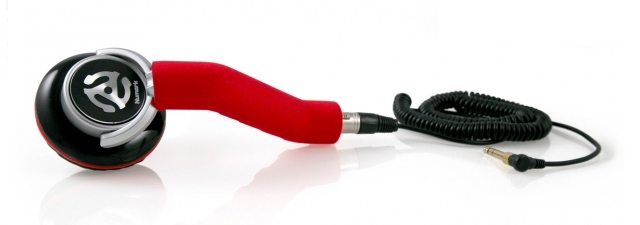
The first lollipop I bought, when I decided to try out the concept. At around just $70 street price, it’s the perfect way to try out stick headphones without breaking the bank, especially if you aren’t confident in making your own DIY version. It’s lightweight plastic construction has proved surprisingly durable, especially considering that, for months, I’ve carried around in the bottom of my bag as my back-up headphone. It’s still going strong now – one of the beauties of a lollipop is that there’s very little to go wrong with them, no fiddly little cables and the like.
If you want to try out a lollipop with the absolute minimum investment, the Redphone is ideal.
Check them out in the DJTT webstore here – and for $5 off, just enter “DJTTlollipop” as a coupon when you’re checking out.
Zomo HD-120
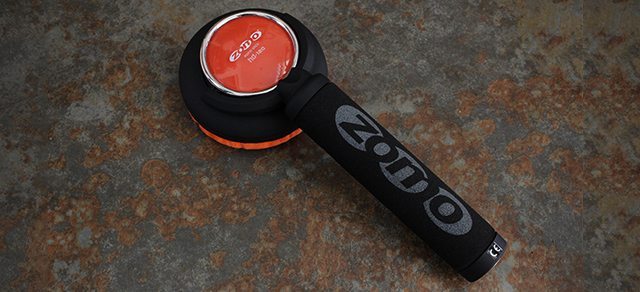
There was a point a few years ago, when German company Zomo were actually the only mass-market manufacturer of lollipops, with the HD-120. So they definitely deserve credit for that.
This was my favourite of all the sticks I’ve tried; and that’s as much down to the comfort factor as anything else. I found the length and size of the straight tube, combined with the size of the cup, to be a perfect fit for me. If I decide to have a custom lollipop made, I’ll have it match the dimensions of the Zomo exactly.
Construction is good, it feels solid, and the sound is loud and punchy. Pricing varies wildly, depending on where you are in the world, and what colour you want (they do many), but it can be easily had for under $100.
Reloop do also have a new model on the market, the Mono Stick. I haven’t had one in the lab, but I did get a hands-on at the BPM show. It’s very, very, similar to the Zomo (suspiciously so), except so light, it feels like the cup has been emptied out… I can’t make a recommendation either way, but it’s another option to look at.
How To Try Them – Custom-Built
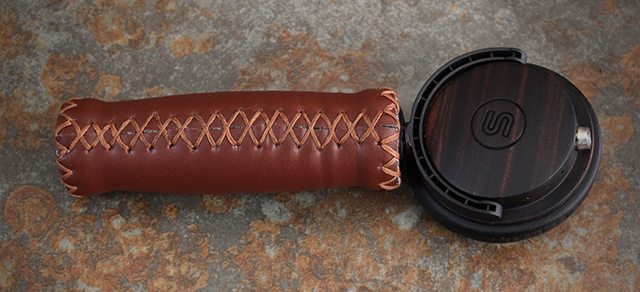
There are a number of one-man-band type producers of lollipops, all around the world. I was surprised to find as many as I did, when researching this feature.
Here in the UK, there is a company called Acou-Sticks. Based out of Leeds, they fashion beautifully made custom lollipops of all varieties, usually with Sony drivers, but with sticks of any shape, size and material you can imagine. They sent me a couple of examples to try, including a truly boutique model with a wooden cup, and hand-stitched leather grip. Not really to my personal taste, that one, but it serves as a perfect example of what can be achieved when you let your creativity go wild with a custom lollipop. Find them here and quote DJTT15 for 15% off any order, exclusively for DJ Techtools readers.
I was already aware of the work of Mario G, who also refurbishes vintage kit like Urei and Bozak mixers. He’s rather cagey about prices and stuff, but he’s a well-respected name in the industry, so worth checking out if you’re Stateside.
Check eBay and keep your eye on forums for other custom builders in your part of the world, and if you have any recommendations of people you’ve tried, please let us know in the comments below.
How To Try Them – DIY

If you have a modicum of skills when it comes to soldering and the like (I don’t), then building a lollipop of your own is really quite straightforward. Indeed, it’s an ideal way to recycle a pair of damaged or irreparable headphones you already own, into something cool and unique.
This is the ‘classic’ guide, posted by Scotty Mac to the Deep House Page forum back in 2009 and there’s lots of useful information over on the Wave Music forum too.
As with the custom builders, we’d love to see any DIY builds that you’ve done, so please show them off in the comments below, and if you have used any lollipop, or this feature inspires you to do so, let us know your thoughts. We think it’s a fairly inexpensive way to possibly bring new life to your mixing.



